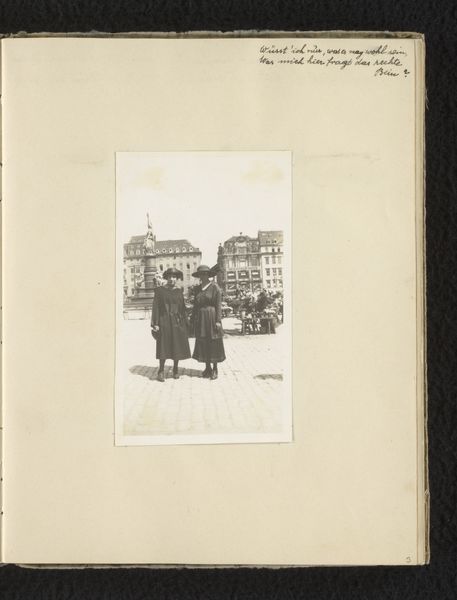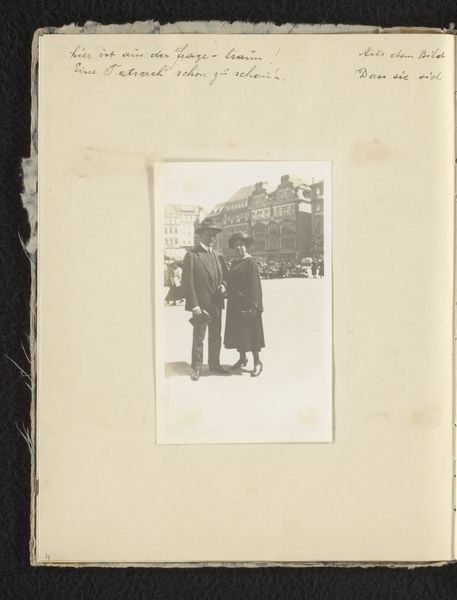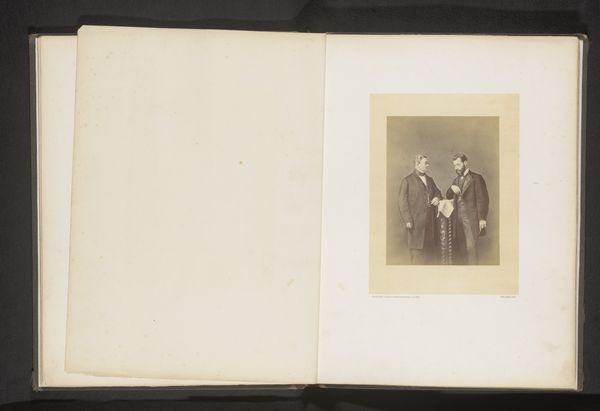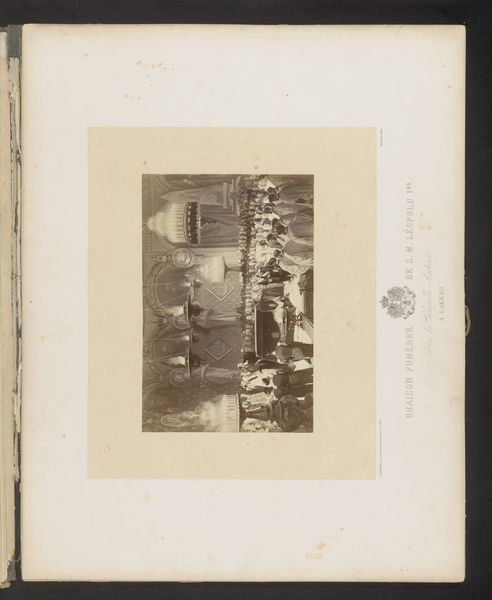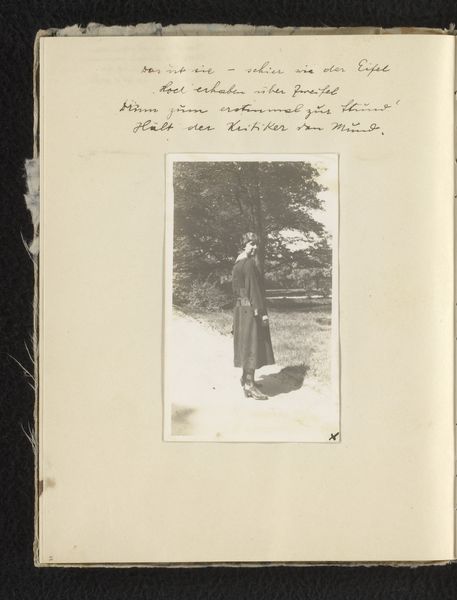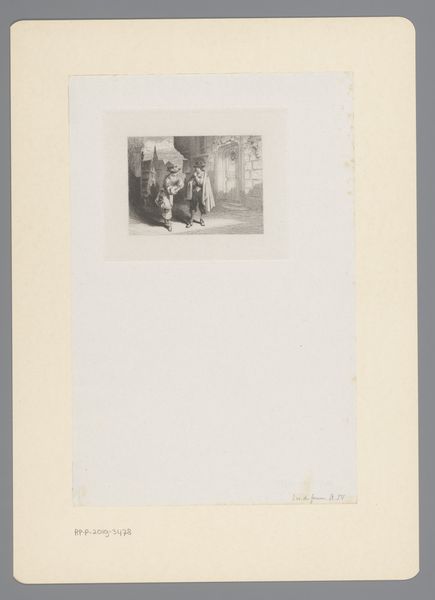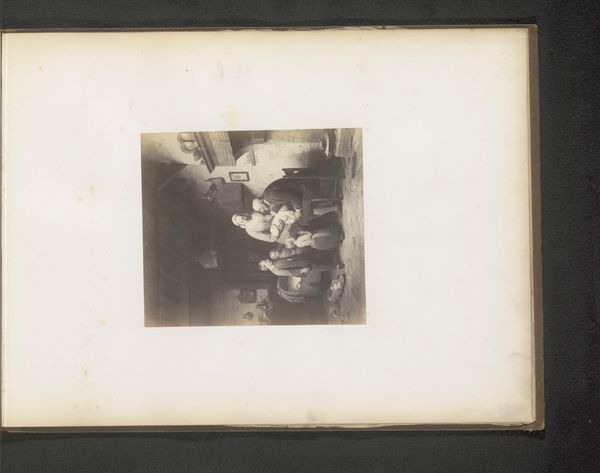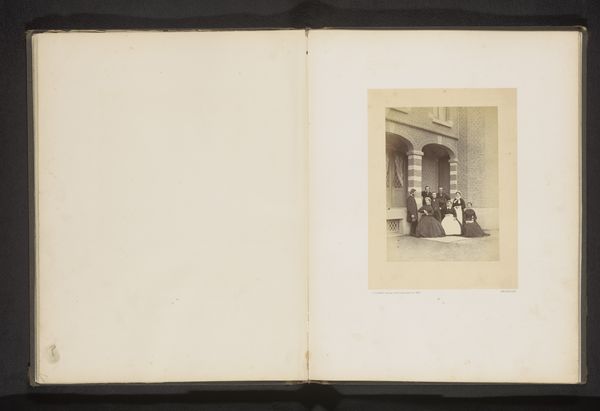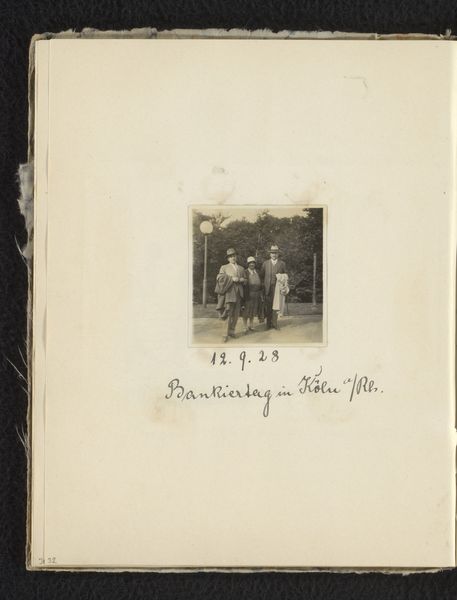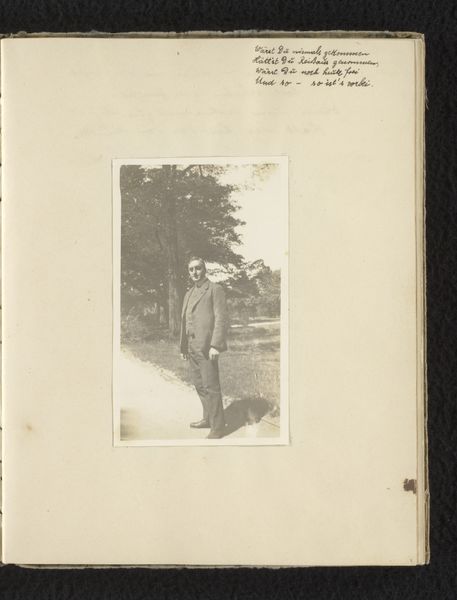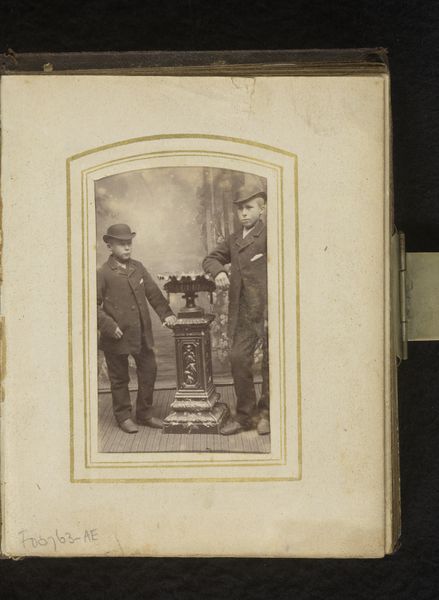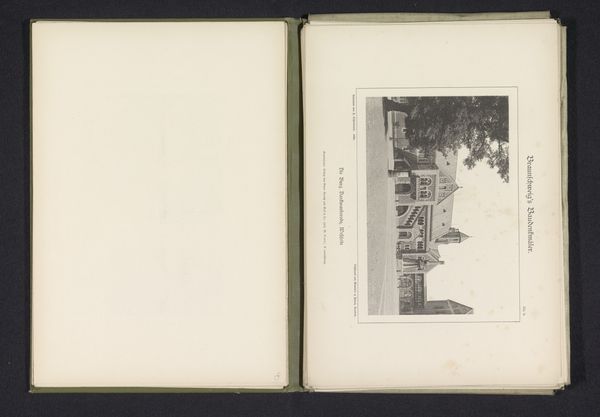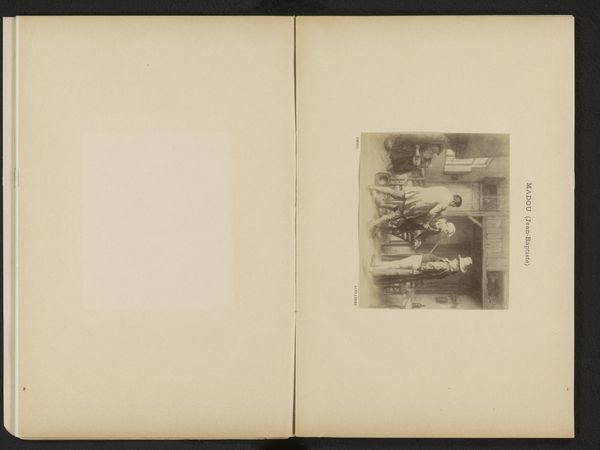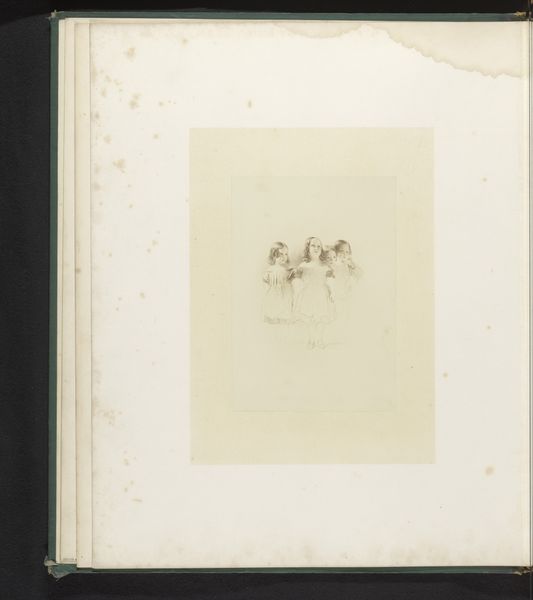
Else Wachenheimer-Moos en haar echtgenoot Eugen Wachenheimer op straat tijdens hun verlovingsstijd, 1920-1922, Dresden 1920 - 1922
0:00
0:00
photography
#
portrait
#
photography
#
photojournalism
Dimensions: height 110 mm, width 65 mm, height 205 mm, width 160 mm
Copyright: Rijks Museum: Open Domain
Curator: Today, we’re looking at a black and white photograph from the early 1920s entitled “Else Wachenheimer-Moos en haar echtgenoot Eugen Wachenheimer op straat tijdens hun verlovingsstijd, 1920-1922, Dresden”. It’s a photojournalistic portrait of the Wachenheimer couple, Else and Eugen, on the streets of Dresden, around the time of their engagement. Editor: There's a formality here, an attempt to fix a fleeting moment that I think gives it real gravitas. The strong contrast between the subjects and the almost blank canvas of the street makes them really pop. The composition divides quite strikingly. Curator: I’m struck by their attire, or perhaps I should say, the symbolic language of their clothing. The heavy coat, the hat--the layered formality of it contrasts with what must have been the joy of an engagement. Almost an outward armor, reflective of a society steeped in tradition, while also being very indicative of that historical moment, especially as seen through the lens of this family in Dresden. Editor: Definitely, and this almost staged feel amplifies the contrast I'm picking up in terms of visual and textural information. The architecture behind them fades to indistinct shapes. In a formal sense, they're the figure and the built background is, surprisingly, just that – background. It seems so carefully calibrated. Curator: I agree that the choice to mute the architecture emphasizes their figures as the central subjects. Given the historical context, I am wondering about the inscriptions above and around the photograph. Editor: Indeed, these notes introduce more visual complexity—an extra layer to consider as we look into this work. Their hand-written style, and ambiguous meanings, are interesting semiotic signifiers for memory and lived experience. Curator: They serve as additional cultural anchors and entry points that give the portrait deeper historical weight, wouldn't you say? Editor: Yes, there's something incredibly poignant about seeing these two figures captured in time on the precipice of something wonderful in the midst of historical uncertainty. It makes you think about temporality and our human experience. Curator: It leaves one with a sense of the beauty, fragility, and preciousness of the personal sphere during a moment of upheaval. Thank you. Editor: Thanks!
Comments
No comments
Be the first to comment and join the conversation on the ultimate creative platform.
